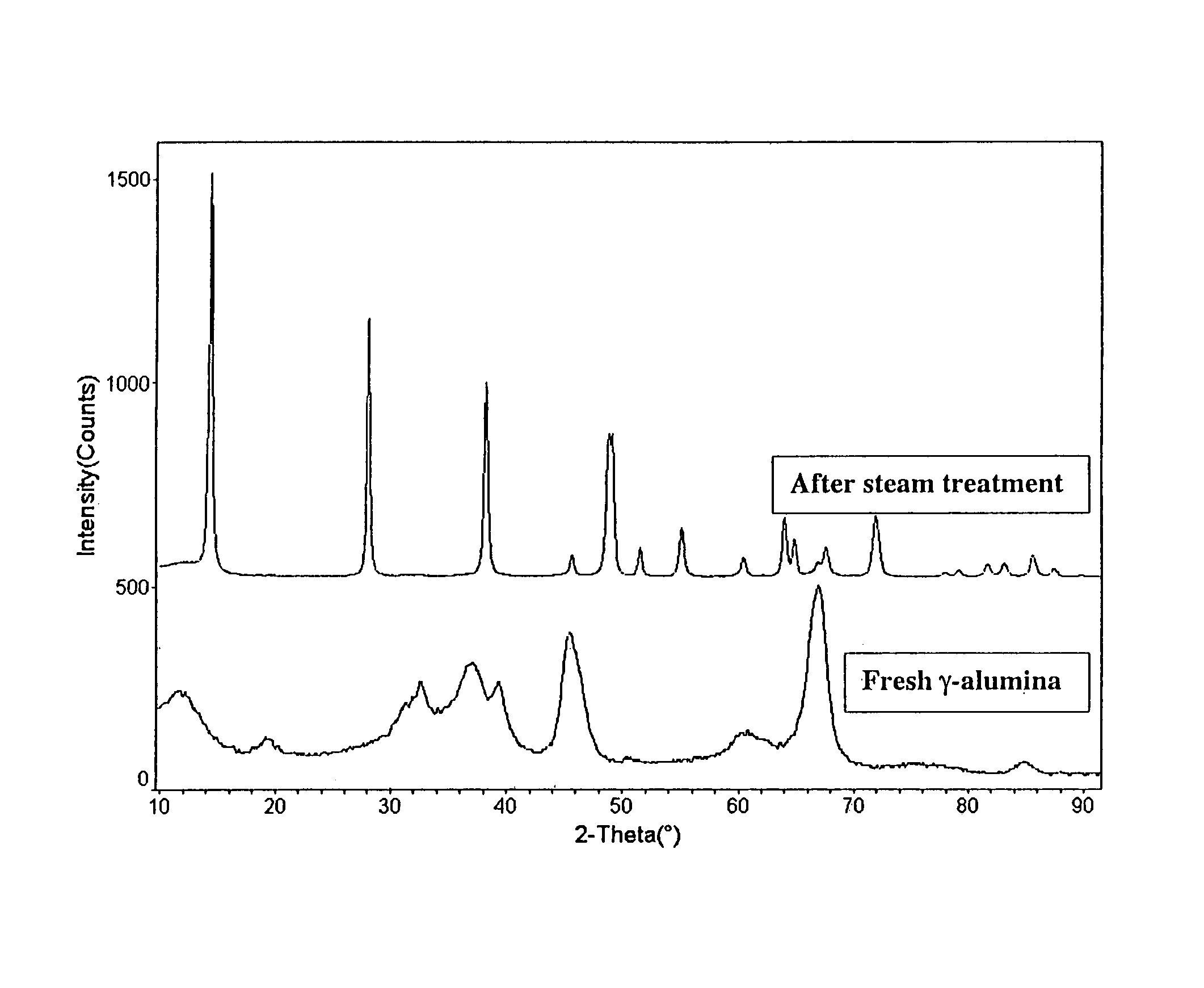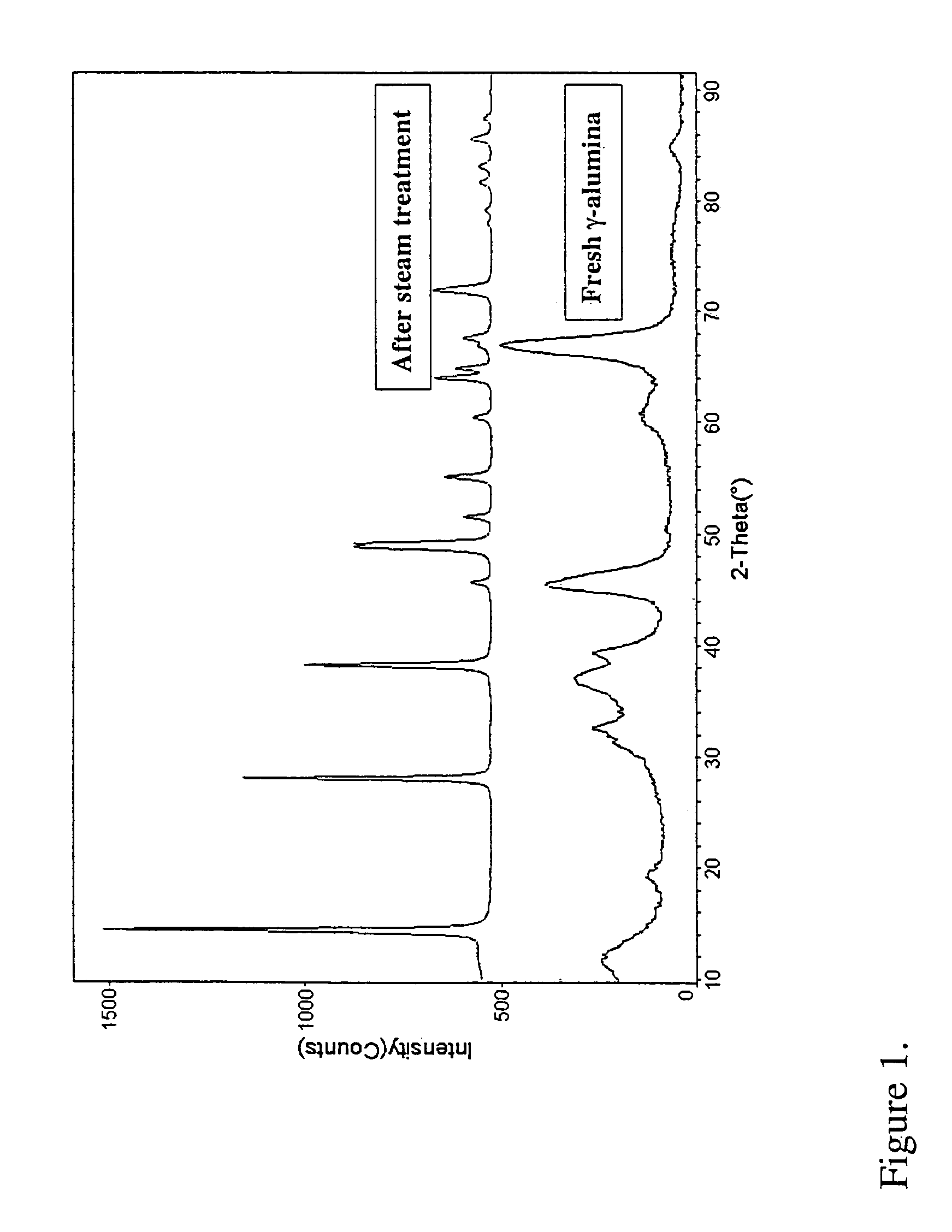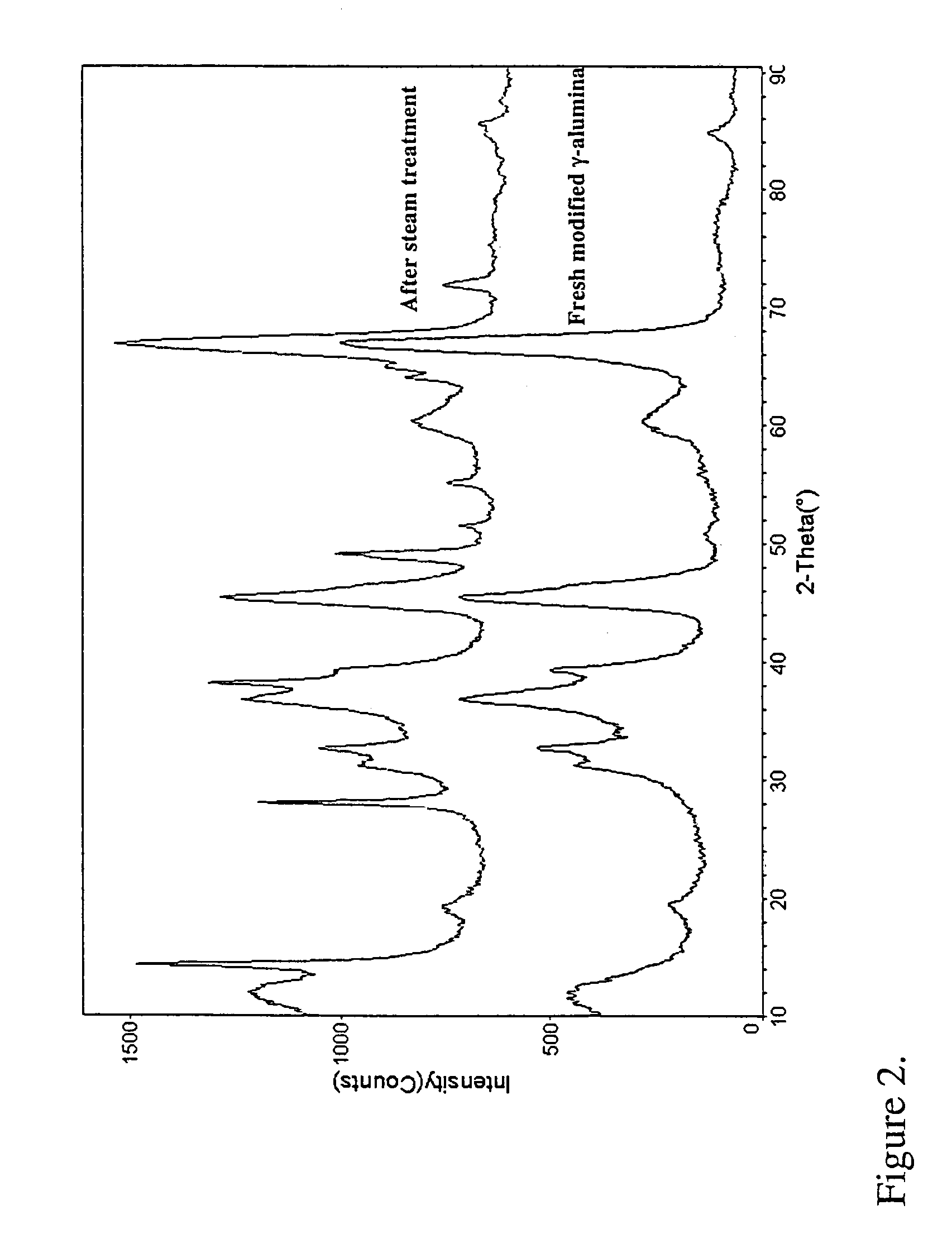Stabilized transition alumina catalyst support from boehmite and catalysts made therefrom
- Summary
- Abstract
- Description
- Claims
- Application Information
AI Technical Summary
Benefits of technology
Problems solved by technology
Method used
Image
Examples
example 1
Stabilized Transition Alumina wherin Steaming Follows Impregnation
[0078]5 g of gamma alumina from Condea Vista was impregnated with an aqueous solution of 0.5 grams of cobalt nitrate hexahydrate [Co(NO3)2.6H2O], (2% Co by weight), using the technique of incipient wetness impregnation. The stabilizer-impregnated alumina was dried at a temperature of 80° C. for 16 hours, and further calcined at 300° C. for 2 hours. The calcined stabilizer-impregnated alumina was charged to a Parr autoclave and treated at conditions sufficient to create an effective partial water vapor pressure of 20 bar, with 15 g of water heated at 220° C. for 2 hours. The resulting stabilizer-containing boehmite alumina was collected and calcined at a temperature of 750° C. for 5 hours to produce a stabilized transition alumina. Physical analyses were carried out on the stabilized crystal lattice-modified alumina both before and after steam testing, wherein the samples were steam tested at a steam pressure of about ...
example 2
Stabilized Transition Alumina wherein Steaming Follows Impregnation
[0079]5 g of gamma alumina from Condea Vista was impregnated with an aqueous solution of 0.25 grams of zirconyl nitrate hydrate [(ZrO(NO3)2.xH2O], equivalent to 2% Zr by weight in the stabilized alumina, using the technique of incipient wetness impregnation. The stabilizer-impregnated γ-Al2O3 was dried at 80° C. for 16 hours and further calcined at 300° C. for 2 hours. The calcined stabilizer-impregnated γ-Al2O3 was charged to a Parr autoclave with 15 g of water and heated at 220° C. for 2 hours; conditions sufficient to create an effective partial water vapor pressure of 20 bar. The resulting stabilizer-containing boehmite alumina was collected and calcined at a temperature of 750° C. for 5 hours to afford a stabilized transition alumina. Physical analyses were carried out on the stabilized crystal lattice-modified alumina both before and after steam testing as described in EXAMPLE 1. The results are shown in Table ...
example 3
Catalyst Made From Stabilized Transition Alumina
[0080]10 g of γ-Al2O3 from Condea Vista and 7.5 g water were charged to a Parr autoclave and heated at 220° C. for 2 hours; conditions sufficient to create an effective partial water vapor pressure of 10 bar. The resulting boehmite alumina was collected and impregnated with an aqueous solution of 0.9876 grams of cobalt nitrate hexahydrate [Co(NO3)2.6H2O], equivalent to 2% Co by weight in the stabilized alumina, using the technique of incipient wetness impregnation. The stabilizer-impregnated boehmite alumina was then dried at 80° C. for 16 hours and further calcined at a temperature of 750° C. for 5 hours to afford a stabilized transition alumina. The transition alumina was impregnated with a solution containing cobalt nitrate hexahydrate [Co(NO3)2.6H2O], a ruthenium salt, and boric acid using the technique of incipient wetness impregnation. The stabilized transition alumina impregnated with the promoters was calcined at a temperature ...
PUM
| Property | Measurement | Unit |
|---|---|---|
| Temperature | aaaaa | aaaaa |
| Temperature | aaaaa | aaaaa |
| Temperature | aaaaa | aaaaa |
Abstract
Description
Claims
Application Information
 Login to View More
Login to View More - R&D
- Intellectual Property
- Life Sciences
- Materials
- Tech Scout
- Unparalleled Data Quality
- Higher Quality Content
- 60% Fewer Hallucinations
Browse by: Latest US Patents, China's latest patents, Technical Efficacy Thesaurus, Application Domain, Technology Topic, Popular Technical Reports.
© 2025 PatSnap. All rights reserved.Legal|Privacy policy|Modern Slavery Act Transparency Statement|Sitemap|About US| Contact US: help@patsnap.com



